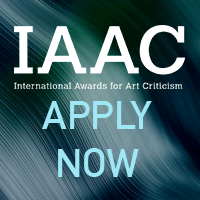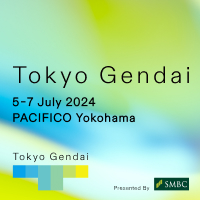Genevieve Chua’s “Wilful Machine”
By Clara Che Wei Peh
.jpg)
Installation view of GENEVIEVE CHUA’s Wilful Machine, 2024, scaffolding, steel, light projection, animation, dance, and performance: 40 min. Courtesy the artist and Singapore International Festival of Arts.
May 23–May 26, 2024
Genevieve Chua: Wilful Machine
Singapore International Festival of Arts 2024
A vast room fills up with electronic beats that reverberate across its high ceilings; in the center, a scaffolded structure stands tall, basked in a red glow. To enter, one queues on either side of the structure, as if waiting to plunge into the belly of the beast. When all are seated between two pillars, three dancers walk out cloaked in red, twisting, flowing, moving their bodies in tandem to synthetic sounds made of both speech and rhythm.
Thus began Wilful Machine, Genevieve Chua’s 40-minute performance commissioned by Singapore International Festival of Arts 2024, marking their first foray into the medium. Known primarily as an abstract painter before this work, they largely considered visitor interaction through the painted object, or through the gallery space. In an artist talk accompanying their 2020 exhibition “Twofold” at STPI, Chua spoke about dramaturgy as a device to consider the relationship between paintings and the movements they facilitate—say, prompting viewers to step forward, then backwards, tilt their heads, or squint their eyes—which animates the still object and expands its presence beyond the gallery walls. Yet, such dynamics were reversed in Wilful Machine, as viewers sat still, in the dark, and watched passively as dancers, projected visuals (playing on screens behind the audience), and discordant soundscape emerged. While the abstract painting may require a suspension or distortion of context and connection, the performance suffered precisely because of the same effects.
Wilful Machine’s discussion of technology also lacked the rigor of past works. In Artificially Intelligent (2021), for instance, Chua converted non-alphanumeric keyboard characters (brackets, full-stops) into abstract forms embossed on prints, resembling illegible poetry. They described their artistic process for this work as inherently “illogical and inefficient,” because throughout the deconstruction of symbols the artist allowed themself to be guided by emotion and instinct, rather than a clear set of instructions—as the algorithms that govern computers are. In doing so, Chua aimed to “break the efficiency of [technological] systems in order to humanize them.” Their 2023 work Prove You Are Human took this transformation of machine symbols further, as they plastered CAPTCHA codes across the façade of Block 39 in Tanjong Pagar Distripark, the building that Singapore Art Museum inhabits, forming an abstract yet readable composition. Once recognized, the “codes” actually depict disjointed letters that, if verbalized, mirror the sounds of the highway adjacent to the museum.
.jpeg)
Installation view of GENEVIEVE CHUA’s Wilful Machine, 2024, scaffolding, steel, light projection, animation, dance, and performance: 40 min. Courtesy the artist and Singapore International Festival of Arts.
Wilful Machine continues this exploration of technological language as it morphed cylinders, beaming circles, and flashing projections across screens behind the audience. But instead of expanding our conception of these technologies through a novel human element, the work simply reiterated well-established discussions. To describe a machine as “wilful” is to suggest that it has its own agency. This is often speculated about for artificial general intelligence (AGI), a form of AI that could theoretically possess or surpass human cognitive abilities, although the parameters of what exactly defines this technology remain unclear. Wilful Machine illustrates a vision of AGI that focuses on these same questions: two agents (represented by cylinders projected onto pillars that audiences were sat between) discuss feelings, updates, and the boundaries distinguishing “human” and “machine” through projected, disembodied voices. Their conversation reflects on how they have developed, particularly, by acquiring new abilities as they translate human behavior into patterns, and ultimately, into algorithms. As the machinic voices ruminated on the body, on skin and on sweat, dancers contorted their bodies as conduits for the AGI agents, emphasizing a corporeality that the voices could never possess.
Chua’s willingness to experiment is commendable, but this performance left much to be desired, for the Wilful Machine painted a picture of technology as we can already see it. Considering that the artist is renowned for transformation and abstraction, with works such as Artificially Intelligent successfully disrupting the rhythm of such technologies, one inevitably expected more from this work. In the past Chua has demonstrated a remarkable ability to challenge the assumptions we take for granted, turning them on their head and urging viewers to see beyond the surface; to imagine new relationships between subject and object. But here Chua’s transformative touch was diluted, as Wilful Machine presented a rather predictable narrative of human-machine existence without answering the very questions it posed. At stake is not only the nature of intelligent machines and AGI, but also the potential of artists, who many look to for reshaping and understanding the future.
Clara Che Wei Peh is a curator and arts writer from Singapore.







